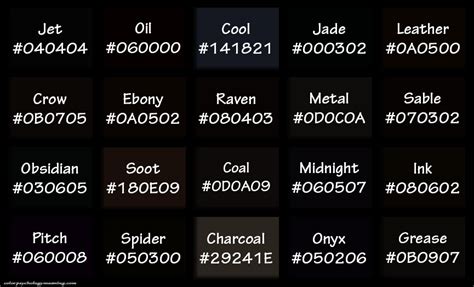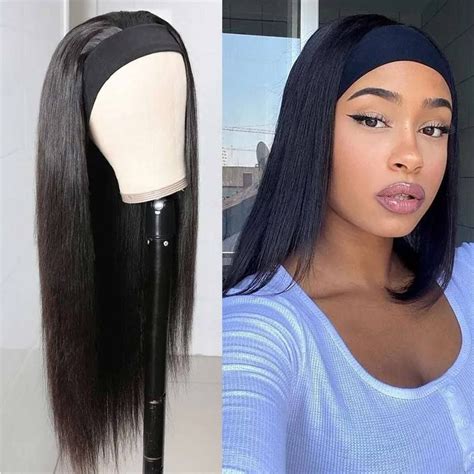Overview: Headband Wig – The Ultimate Crown
A headband wig is an innovative fusion of fashion and functionality, offering a seamless blend of comfort, style, and versatility. Unlike traditional wigs that require lace or adhesive, a headband wig features a built-in headband that secures it snugly onto the scalp. This effortless application method makes it a perfect choice for beginners and experienced wig wearers alike.

The global headband wig market is experiencing a surge in popularity, with a projected market size of $2.5 billion by 2028 (Grand View Research). This growing demand is driven by the wig’s convenience, natural appearance, and protective benefits for natural hair.
Key Features of Headband Wigs:
- Built-in Headband: A stretchy, adjustable headband forms the base of the wig, providing a secure and comfortable fit.
- Human Hair: Headband wigs are crafted from ethically sourced human hair, ensuring a natural look and feel.
- No Glue or Tape: The wig is effortlessly installed without the need for adhesives, eliminating any potential scalp irritation.
- Protection for Natural Hair: Headband wigs safeguard the wearer’s natural hair from heat styling and environmental damage.
- Versatile Styling: The headband can be customized with stylish patterns, adorned with accessories, or simply concealed beneath a scarf for a more discreet look.
Types of Headband Wigs
Headband wigs come in a wide variety of styles, textures, and lengths. Common choices include:
- Silky Straight: Sleek and elegant, with a natural sheen.
- Body Wave: Loose, bouncy curls that add volume and movement.
- Curly: Defined, voluminous curls that create a statement look.
- Bob Cut: A classic, sophisticated style that complements multiple face shapes.
- Lace Front Wig: Features a lace panel at the hairline, allowing for a realistic and seamless transition from wig to scalp.
Benefits of Headband Wigs
1. Comfort and Convenience: Headband wigs are renowned for their ease of use and maximum comfort. The adjustable headband accommodates various head sizes and shapes, ensuring a secure fit without causing tension or discomfort.
2. Natural Appearance: Human hair headband wigs mimic the natural texture, movement, and shine of healthy hair. When properly installed, the transition between the wig and scalp is virtually undetectable.
3. Versatility and Style: Headband wigs offer endless styling possibilities. The headband can be customized to match any outfit or occasion, and the wig can be effortlessly restyled with heat tools.
4. Protective Qualities: Headband wigs safeguard natural hair from the damaging effects of heat styling, chemical treatments, and environmental stressors. By providing a protective layer, the wig promotes hair health and longevity.
5. Time-Saving: Installing a headband wig takes a fraction of the time compared to traditional lace or glue-on wigs. This convenience frees up precious time for other activities.
Drawbacks of Headband Wigs
1. Limited Durability: Headband wigs may not be as durable as traditional wigs, particularly if worn frequently or exposed to harsh conditions.
2. Heat Resistance: While human hair headband wigs can withstand some heat, excessive heat styling can damage the hair and shorten the wig’s lifespan.
3. Price: Headband wigs, especially those made from high-quality human hair, can be more expensive than synthetic wigs.
Choosing the Right Headband Wig
Selecting the perfect headband wig involves several key considerations:
1. Face Shape: Different headband wig styles flatter different face shapes. Round faces benefit from layers and volume, while oval faces can pull off any style.
2. Hair Texture: Match the texture of your headband wig to your natural hair for a seamless blend. Most headband wigs offer a choice of straight, wavy, or curly textures.
3. Length: Consider your lifestyle and personal preferences when choosing the length of your headband wig. Shorter wigs are more versatile, while longer wigs provide a more dramatic look.
4. Brand and Quality: Opt for reputable brands that use high-quality human hair and ethical sourcing practices.
5. Color and Customization: Choose a headband wig color that complements your skin tone and style. Many wigs allow for further customization, such as bleaching or dyeing.
Application and Maintenance of Headband Wigs
1. Installation:
- Brush your natural hair to remove tangles.
- Place the headband wig on your head and adjust the headband for a secure fit.
- Use bobby pins or clips to secure any loose strands.
2. Maintenance:
- Regular brushing and detangling prevent tangles and maintain shine.
- Wash and condition the wig with sulfate-free products designed for human hair.
- Air-dry the wig completely before storing it on a wig stand.
Effective Strategies for Headband Wig Care
1. Heat Protection: Use a heat protectant spray before using heat styling tools.
2. Hydration: Nourish the hair with regular deep conditioning treatments.
3. Regular Cleaning: Wash the wig every 2-3 weeks to remove dirt and product buildup.
4. Proper Storage: Store the wig in a dry, cool place when not in use.
Common Mistakes to Avoid with Headband Wigs
1. Over-Tightening: Avoid pulling the headband too tightly, as this can cause discomfort and tension.
2. Excessive Heat Styling: Limit heat styling to minimize damage to the hair fibers.
3. Neglecting Maintenance: Regular cleaning and conditioning are essential to maintain the wig’s quality and appearance.
4. Cheap Quality: Avoid purchasing low-quality wigs that may shed or become tangled easily.
5. Inappropriate Color Match: Ensure that the wig color matches your natural hair tone for a realistic look.
FAQs about Headband Wigs
1. How long do headband wigs last?
With proper care, headband wigs can last for several months to a year.
2. Can I sleep in a headband wig?
It is not recommended to sleep in a headband wig, as it can cause friction and damage to the hair.
3. Can I swim in a headband wig?
While some headband wigs are advertised as water-friendly, it is generally not advisable to swim or immerse them in water for extended periods.
4. How do I style a headband wig?
Headband wigs can be styled with heat tools or standard hair styling products. Always use heat protection when using heat styling tools.
5. How do I prevent headband wig tangles?
Regular brushing, detangling, and deep conditioning treatments help prevent tangles.
6. Can I bleach or dye a headband wig?
Some headband wigs allow for chemical processing, but it is important to consult with a professional hairstylist to ensure the wig can withstand the treatment.
7. How do I clean a headband wig?
Wash the wig with sulfate-free shampoo and conditioner designed for human hair. Air-dry the wig completely before storing it on a wig stand.
8. How often should I replace my headband wig?
Replace your headband wig when it shows signs of excessive shedding, tangling, or damage that cannot be repaired.
Conclusion
Headband wigs offer a versatile, low-maintenance, and natural-looking solution for those seeking a comfortable and stylish hair enhancement. With proper care and maintenance, these wigs can provide years of confidence and style. By embracing the latest trends and advancements in headband wig technology, wearers can enjoy a wide range of hairstyles without sacrificing comfort or compromising natural hair health.
